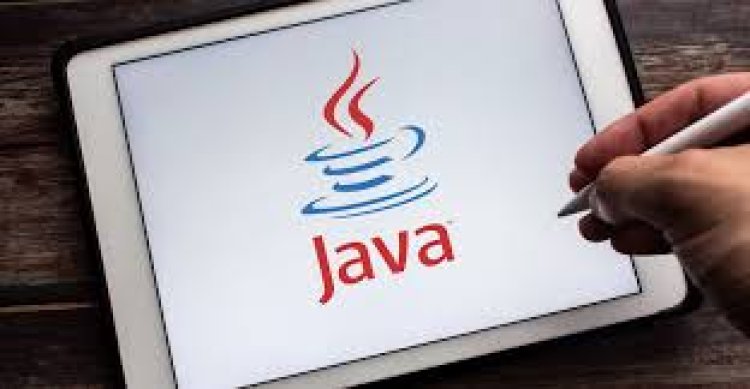Java and Apache Dubbo: Building Microservices Communication
Share this Post to earn Money ( Upto ₹100 per 1000 Views )

Introduction:
As software development becomes more and more dynamic, the need for scalable, flexible, and effective microservices architecture has become critical. Java, a programming mainstay, along with Apache Dubbo, prove to be a potent combination for creating strong microservices communication. In this detailed guide, we will examine the specifics of both Java and Apache Dubbo and explore how they work together to create a smooth and effective microservices communication. Whether you're a developer in Meerut looking to enhance your skills or someone interested in a comprehensive Java course in Meerut, Moradabad, Bareilly, Agra and other more cities in India understanding the synergy between Java and Apache Dubbo is essential for navigating the complexities of modern software architecture.
Understanding Microservices Communication:
Applications built with microservices—small, independent services—need efficient communication mechanisms to work together. As data consistency, synchronization, and system performance are all dependent on communication between these services, Java and Apache Dubbo provide a solid solution for microservices communication.
The Java Advantage:
Java is a platform-independent language that has a large ecosystem and an object-oriented structure. It is also a great choice for developing microservices because of its mature and extensive libraries, which make it easy to implement complex functionalities. Java's Write Once, Run Anywhere (WORA) philosophy gives developers the flexibility to deploy microservices across a variety of environments.
Introducing Apache Dubbo:
Developed with an emphasis on performance and scalability, Apache Dubbo is an open-source, high-performance RPC (Remote Procedure Call) framework that has gained prominence for its role in streamlining the development of microservices architectures. Dubbo makes microservices communication easier by offering features like load balancing, fault tolerance, and dynamic service discovery. Dubbo integrates with Java seamlessly, making it a great choice for building microservices communication.
Key Features of Apache Dubbo:
1. Service Registration and Discovery:
As Dubbo's registration center enables services to dynamically register and find one another, it guarantees that the system is always aware of the services that are accessible, even as microservices scale up or down.
2. Load Balancing:
Dubbo distributes requests among accessible services using clever load balancing techniques to maximize resource usage and avoid overloading.
3. Fault Tolerance:
Dubbo has built-in fault tolerance techniques and allows fallbacks and retries among other tactics to increase system robustness because microservices are prone to failure.
4. Asynchronous Communication:
Microservices can communicate with each other synchronously or asynchronously using Dubbo, giving developers the flexibility to select the best approach for their needs.
5. Dynamic Configuration:
In a microservices environment, configuration changes are unavoidable. Dubbo's ability to handle dynamic configuration updates without requiring service restarts guarantees flexibility in response to shifting circumstances.
Building Microservices Communication with Java and Dubbo:
1. Setting Up a Microservices Project:
To get started, use your favorite build tool to create a Java microservices project, and specify the services and their features inside the project body.
2. Integrating Dubbo Dependencies:
Add Apache Dubbo dependencies to your project. These dependencies include the registry center, Dubbo API, and any other modules needed for certain functionalities.
3. Service Interface Definition:
Create short, well-defined service interfaces that define the parameters and methods of communication across microservices; next, mark these interfaces as Dubbo services by adding Dubbo annotations to them.
4. Service Implementation:
Add the needed functionality to the defined service interfaces, then annotate the service implementation classes to identify them as Dubbo service providers.
5. Configuration and Registry Setup:
To enable appropriate registration and microservice discovery, configure Dubbo properties in your application setup, such as the address, registry type, and other parameters.
6. Testing Microservices Communication:
Create test cases to verify the microservices' communication, and use Dubbo's testing tools and utilities to mimic different scenarios, such as failure tolerance and load testing.
Best Practices for Java and Dubbo in Microservices Communication:
1. Versioning:
Versioning should be implemented for microservices to provide backward compatibility as the system changes. Dubbo is compatible with versioning, which facilitates seamless transitions during updates.
2. Monitoring and Logging:
Incorporate logging and monitoring systems into your microservices architecture. Dubbo offers metrics and logging capabilities to help with troubleshooting and performance analysis.
3. Security Considerations:
Microservices communication security should be given top priority. When working with sensitive data, use encryption and secure communication protocols.
4. Documentation:
Make sure your microservices architecture is well documented. To make it easier for development teams to collaborate, include information on dependencies, communication protocols, and service interfaces.
Conclusion:
In conclusion, the combination of Java and Apache Dubbo provides a powerful way to build microservices communication. By utilizing the flexibility of Java and the strength of Dubbo, developers can build a microservices architecture that is both scalable and dependable. Adopting best practices guarantees the smooth integration of microservices, paving the way for the creation of high-performance and resilient systems in the dynamic world of contemporary software architecture. As technology develops, the synergy between Java and Apache Dubbo will surely be a key factor in determining the direction of microservices communication in the future








